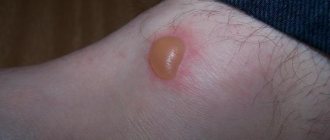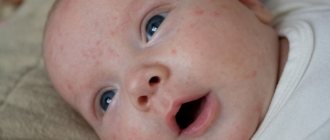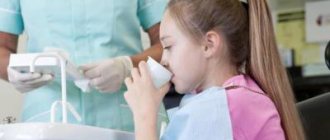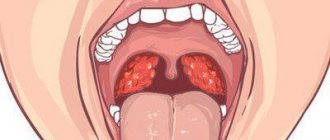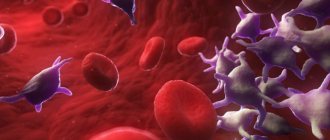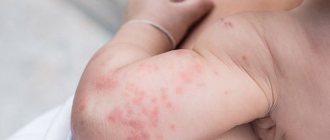Redness, swelling, and swelling of the skin appears from the injected poison immediately after an insect attack. Gradually, the symptoms disappear if you do not injure the affected area. But what to do if a child scratches a mosquito bite and gets infected? And not all adults can tolerate the itching and restrain themselves from injuring the affected area. As a result, the bite site swells even more, and it is possible that pathogenic bacteria can penetrate, causing an inflammatory process.
To reduce the risk of serious damage to the body, you need to know how to treat the consequences of bites and replenish your first aid kit with the necessary medications before the summer.
Treatment of scratching without severe allergies
Mosquito venom causes severe itching. To cope with it, a person begins to scratch the wound. It is especially difficult for a child to overcome such a desire. As a result, droplets of blood appear, a clear liquid. The bite site should be immediately rinsed with cold water and treated with one of the pharmaceutical preparations.
- Balm, pencil or patch “Golden Star”. The products contain petroleum jelly, paraffin, essential oils, eucalyptus, mint, cloves, and have no contraindications other than individual intolerance to the components. After application, the skin feels a slight tingling sensation, strong cooling, and the itching goes away immediately. Children and adults can treat the wound up to 4 times a day.
- Cream "Boro Plus". The composition of the drug includes aloe, sandalwood. They relieve itching and inflammation if a child scratches a mosquito bite until it becomes very red. Boro Plus is suitable for children of any age. It should be applied pointwise up to 4 times a day.
- Balm “Rescuer”. The product has a fatty consistency and has a regenerating, anti-inflammatory and antiseptic effect. It contains refined naftalan oil, sea buckthorn, lavender, tea and sandalwood oils, turpentine, beeswax, and vitamins. The balm should not be used together with other antiseptics (for example, iodine, hydrogen peroxide) to avoid an unwanted chemical reaction. For babies, you should purchase the “Children's Rescuer” balm. It can be used from birth.
- Balsamic liniment (according to Vishnevsky). The main component of the ointment is birch tar, which has a strong anti-inflammatory and antibactericidal effect. The drug can be used by children from an early age. Its negative indicator is a specific smell. In addition, traces of the ointment may remain on clothing and bedding.
If a child scratches a mosquito bite without causing an infection, the wound must be treated within 5 days. As the severity of symptoms decreases, the number of procedures is gradually reduced from 4 to 1 per day.
Allergy with secondary infection
An ordinary mosquito bite can become a big problem if an inflammatory process begins. This will become clear when the affected area is swollen, the skin becomes very red, a lump appears and a rash appears around it. In this case, you cannot do without antibiotic therapy with a course of 5 days to 3 weeks.
Treatment must be carried out under the supervision of a doctor. The doctor usually prescribes medications for external treatment.
- Levomekol. The ointment inhibits the development of bacteria, has an immunomodulatory effect, and is suitable for infants. The ointment is applied to the tampon and secured with a bandage or bandage.
- Methyluracil. The drug is effective for purulent lesions and ulcers, eliminates inflammation well, and does not cause harm to healthy skin.
- Elokom-S. The drug contains an antibiotic, glucocorticosteroid, salicylic acid, immediately eliminates itching, effectively suppresses pathogenic bacteria, and disinfects the wound.
Why are midges so dangerous?
Midges attack humans on hot summer days. They live near open water bodies on the stems of tall grasses. Most often, these insects attack during daylight hours and almost never at night. They are very attracted to the smell of sweat and light clothing. Midges attack both individually and in whole groups.
These insects are considered dangerous because their saliva contains toxic substances. During a bite, they enter the human bloodstream. The result of such contact is often an allergic reaction, which in some cases may require hospital treatment under close medical supervision.
These insects can also carry dangerous microorganisms or viruses on their legs. When they come into contact with the skin, they enter the bloodstream through small wounds and cause serious illness.
This is especially dangerous when an adult or child scratches the bite site. The resulting wound allows dangerous infections and bacteria to enter the body.
Prevention measures
Most often, insects attack in suburban areas, during outdoor recreation. When doing gardening work or preparing for a picnic, you may not immediately notice an insect attack on your baby, and he will try to eliminate the itch with dirty hands. As a result, scratching a mosquito bite will open the door to infection.
The best preventive measure against attacks is the use of repellents: patch, bracelet, drops, spray. In addition to special products, essential oils of mint, geranium, eucalyptus, lemongrass, and baby cream with vanilla work well. Prophylaxis can be used only twice a day; it lasts for 2 hours.
If, however, the insects succeed in attacking, timely treatment will save you from severe scratching of mosquito bites. First you need to rinse the wound with cold water, then disinfect it with one of the following products:
- medical alcohol;
- tincture of valerian, motherwort, propolis, calendula;
- 3% solution of hydrogen peroxide;
- tea tree oil;
- Menovazin solution.
Disinfector can be prepared from home remedies:
- Add a little water to baking soda to form a paste. It is applied to the bite site and left until dry. For a small child, the wound can be treated with a weak soda solution.
- Laundry soap is foamed and applied to the skin.
- Combine ¼ glass of water and 1 teaspoon of table vinegar, soak a cotton napkin in the solution and make a compress.
- Aloe juice is suitable for impregnating a gauze bandage. The plant can simply be crushed, wrapped in a bandage and applied to the bite site.
- Toothpaste and shaving foam are used as an antiseptic.
Before treatment, you must be sure that the victim is not allergic to the components of the intended treatment.
It is easier to prevent mosquito scratching than to treat the wound later. If it is not possible to use a first aid kit or home remedies, their task is performed by medicinal plants: celandine juice, dandelion, plantain leaf. Regular saliva is a good antiseptic.
Source: VseProZud.ru
Insect protection
General protective measures
- Actions aimed at preventing insects from entering the premises (installing mosquito nets of our own or industrial production, using fumigators that repel insects using ultrasound - Aokeman, Raptor).
- Extermination of insects that have entered the premises (mechanical elimination, installation of special plates and liquids, among which there are models for use in children's rooms - Fumitox, Mosquitall, Raptor).
Personal bite prevention includes
- Use of mosquito nets on strollers.
- Wearing clothing that covers more vulnerable areas of the body while walking in parks, forests, and near water bodies.
- Treatment of exposed skin areas with repellents in the form of patches, sprays, emulsions, creams, aerosol pencils.
Safer and more effective products are emulsions and creams that create a uniform film on the skin. The use of aerosols threatens the repellent getting into the respiratory system and is quite difficult to dose. Pencils quite often make a film that suddenly collapses due to its own stickiness.
- If you want to avoid using chemicals, you can apply natural repellents (essential oils of geranium, lavender, eucalyptus, cloves) to your clothes or stroller. This is permissible only in the absence of an allergic reaction to these plants.
- Wearing special anti-mosquito bracelets (Gardex, BugsLock), impregnating clothes with special repellents (Medilas, Off, Deta, Gardex).
- Do not forget that repellents have a limited time of action, therefore, in order to achieve a lasting protective effect, the application of the product must be repeated from time to time.
You also need to realize that products with a fairly long protective effect are the most toxic, but there are products in which the persistence of the effect is achieved by introducing a prolongator into the composition, which allows you to increase the duration of action without increasing the concentration of the active substance.
Interesting video on the topic:
More effective repellents for children
- Our mother - mixture and cream, approved for use from 18 months.
- Off-cream – allowed for use from 3 years of age.
- MOSQUITUSH - contains organic oil, which makes it possible to use the product for babies from birth.
- Magicoplast is a repellent patch that is glued to clothing for children from 2 years of age.
- Moskitol - the “Protection for Babies” series includes gel, milk, cream and is allowed for use from 1 year, the “Gentle Protection” series consists of wipes, spray, gel and is allowed - from 3 years.
- Taiga - active ingredient - cloves.
Approved for use from birth.
- Deta - milk and cream, approved for use from 2 years.
- Gardex - for children from 1 year old - spray, from 2 years old - pencil, from 12 years old - aerosol and cream-gel.
- Repellents Reftamid.
Midge bites
The midge spreads throughout the globe and has a size within 1 mm.
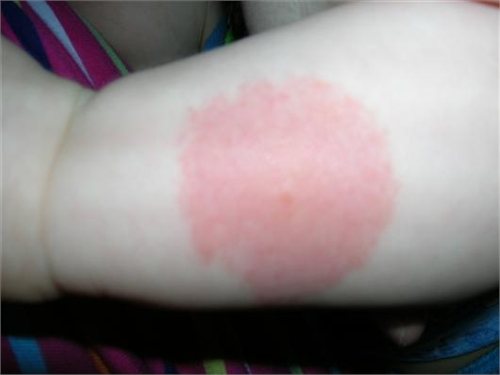
The insect is represented in the fauna by an abundance of subspecies, but all of them at the time of attack on a person are united by one goal - obtaining food. Midge saliva contains a huge amount of toxic substances, which from time to time cause an allergic reaction in the human body. The midge mainly lives in forests and places with developed vegetation, near water bodies, and the peak of insect activity occurs in the hot summer months.
Midges are active in the daytime and morning; no night activity is observed.
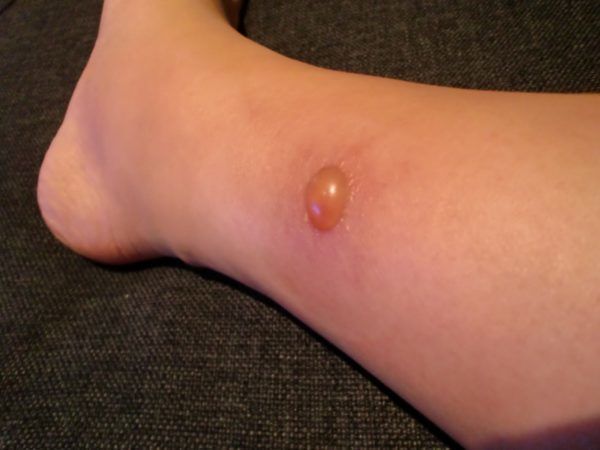
An insect can attack alone, but in most cases an attack on a person is of a mass nature. The insignificant size of the insect allows it to approach and land completely unnoticed by humans. The main attack areas for midges are exposed skin on the legs and arms. Both children and adults are attacked - selectivity is inherent in the insect.
Midge bite photo
Symptoms of a midge bite
The moment of the bite is accompanied by a burning sensation and pain. The intensity of the feelings depends on the toxicity of the insect's saliva; the higher the toxicity, the more noticeable the pain.
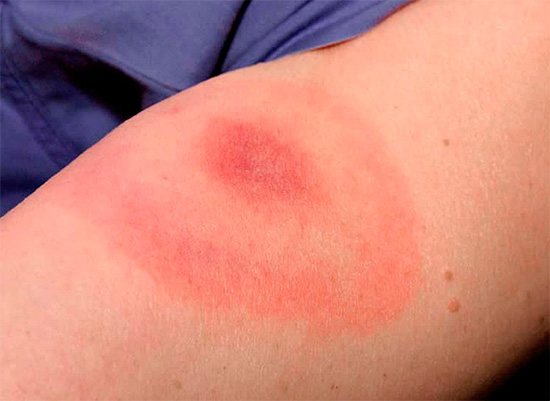
The attack of the midge consists of gnawing the upper layer of the epithelium and actively treating the bite site with anesthetic saliva, therefore quite often a feeling of pain and burning comes after a specific “meal” of the insect and is accompanied by:
- Varying degrees of swelling.
- Allergic rash.
- Severe itching, which is provoked by scratching the bite site.
- Attachment of a secondary infection to places where the skin is scratched.
Allergic reaction to a midge bite
The presence of allergenic and hemolyzing agents in midge saliva is quite often the root cause of an allergic reaction, especially in children.
The human body’s response to an allergen can manifest itself as a local or general reaction:
| General | Local |
| Increased body temperature to 39 degrees Celsius, increased and painful regional lymph nodes, decreased blood pressure, tachycardia, and in rare cases, anaphylactic shock. | Redness of the bite site, intense itching and burning, rashes, swelling of the limbs or bite areas. |
Allergy treatment and first aid
The procedure for dealing with a midge bite is similar to the procedure for dealing with a mosquito bite.
If, as a result of the bite, a social reaction of the body appears, you need to consult a doctor; a child with multiple bites also needs to be examined by a doctor, regardless of whether an allergic reaction develops or not.
- The sites of midge bites are distinguished by unbearable itching, which is difficult for even an adult to withstand, and children are not able to control themselves that way, so they scratch the bite sites vigorously.
- In such cases, after treatment with antiseptics (semi-alcoholic substance or furatsilin), it is advisable to apply a sterile bandage to the damaged area of skin, which can slightly reduce the intensity of the child’s scratching.
- In order to prevent the addition of a secondary infection, the bite site should be treated with Tsindol or salicylic-zinc paste, which, moreover, relieves inflammation.
Measures to protect against midges
Protection against midges is no different from measures aimed at protecting against mosquitoes.
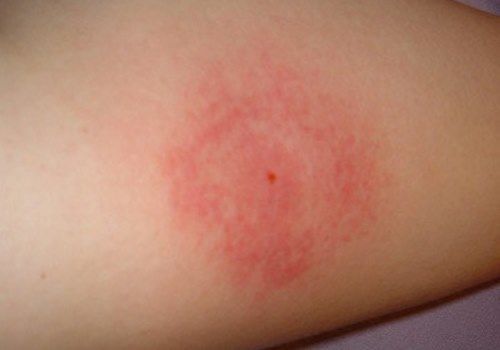
Modern means of protection against insect bites have the same effect on both mosquitoes and midges.
Bee, wasp, hornet stings
Bites from hornets, bees and wasps quite often threaten the development of a severe allergic reaction. According to statistics, the number of people who died from bee stings is 3 times higher than those who died from snake bites.
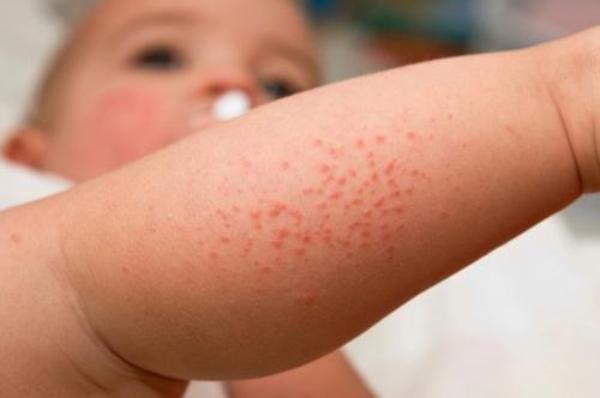
It has been established that about an insect bite is enough to kill a person, and in the case of an allergy sufferer, a bee sting is enough.
Bee stings photo
The principle of the bite of such insects differs from midges and mosquitoes in that the hymenoptera insert a press of poison into the skin, while the toxicity of the injected substance is significantly higher than that of a mosquito or midge. A response to a bite develops in % of cases, but varies in varying degrees of severity.
Comparative features of Hymenoptera
| Bees | Hornets | Wasps | |
| aggressiveness | average | low | high |
| sting | Has serrations and stays in the skin when bitten. | Smooth, does not remain in the skin | Smooth, does not remain in the skin |
| Effect of poison | Causes pain, redness, swelling, increases vascular permeability, stimulates nerve centers, destroys red blood cells | Causes contraction of smooth muscles, redness and pain, promotes hemolysis of red blood cells, dilates blood vessels. | |
| Features of the insect | After being bitten, the insect dies | Can inflict countless bites, does not die after being bitten | |
| The reason for the lethal ending for humans | Stopping the respiratory center | Choking, cardiac arrest | |
Symptoms:
| General reaction (with multiple bites) | Local reaction (usually with bites) | Features of bites to the head and face |
|
|
|
What it is?
In medical practice, a mosquito bite that leads to the development of an allergic reaction is called culicidosis. Around the place where the insect stung, swelling and redness appear, the color of the epithelium changes, and a rash appears.
Mosquito allergies manifest themselves in different ways. There are several stages of the pathological process. There are two types of reactions:
- Organic local reaction. At the site of the bite, redness up to 5 cm in diameter and swelling of soft tissues are observed. These signs are accompanied by burning and itching; if you get an infection, the affected area becomes suppurated, nausea, weakness appear, and the temperature increases;
- A pronounced local reaction is characterized by redness over 5 cm in diameter and tissue swelling. Hyperemia and swelling can increase several days after the incident and persist for up to a week and a half. Additional symptoms: weakness, nausea, loss of appetite.
The main reason for an allergic reaction lies in the fact that the immune system does not produce antibodies that resist the insect's venom and saliva.
For your information, children under 3 years of age react most acutely to insect bites, due to an inferior immune system.
There are several reasons for the development of allergies:
- Hereditary predisposition. If there is a family history of allergies to pests, then information in the genetic code can be passed on to the baby.
- Failure of the immune system. It is impossible to predict the reaction. Allergies develop even in those children who do not have a tendency to such manifestations.
- The child's body is particularly sensitive to bites. In this case, the reaction is aggravated by preconditions - sleep disturbance, poor diet, general fatigue, etc.
The danger of bites lies not only in the development of allergies, but also in diseases transmitted by insects: mosquitoes - potential sources of yellow fever, flies - dysentery and typhoid, etc.
Allergic reaction of the body to the sting of a wasp, hornet, or bee
A hyperresponse of the human immune system to the components of the poison can develop from a single insect bite, and the frequency of the reaction is 0.5 - 2% of the total number of cases.
If the body develops an allergic reaction to a bite, then subsequent bites only worsen the strength of the body's response.
Options for the body's immune system response:
- Quincke's edema is swelling of the deepest layers of the skin and an inflammatory reaction, most often occurring in the area of the upper respiratory tract, neck, and face.
Swelling of the throat threatens suffocation: difficulty breathing, pale face, hoarseness, blueness, loss of consciousness.
- Urticaria - constant intense itching, different localization of pale pink blisters.
- Anaphylactic shock - occurs quickly after an insect bite, the highest degree of allergic response of the body. The course of shock depends on the moment of development; the earlier, the more severe.
The sequence of symptoms of anaphylactic shock is redness, swelling of the face, itching of the whole body and rash, increased temperature and chills, nausea, increased frequency and difficulty breathing, decreased blood pressure, dizziness, tachycardia, loss of consciousness.
Anaphylactic shock - forms of the course
| Skin | Renal | Pulmonary | Cardiovascular | Brain |
| Hives (rash), bleeding | Acute renal failure | Inflammation of the bronchi, bronchospasm | Tachycardia, coronary spasm, angina pectoris, heart attack | Seizures, cerebral edema, coma |
First aid
Knowing what to do after a mosquito bite can prevent the development of swelling. To avoid such undesirable consequences, you need to carry out several procedures:
- We wash the affected area with cold soapy water.
- Apply an ice compress for a quarter of an hour. To do this, simply take ice, wrap it in gauze and apply it to the bite site. Such manipulations will help remove dirt from the skin and prevent the development of the inflammatory process.
- The next step is treatment with an antiseptic. You can use plant juices, antiseptics, prepared according to a folk recipe (we'll talk about them later).
Such events are held twice a day. If a mosquito has bitten a child, then you need to explain to him that scratching the wound is extremely undesirable, since this can lead to infection and long treatment.
Treatment
Treatment for mosquito bites at home is symptomatic. If the body's reaction is moderate, a small bump of reddened skin does not require treatment. However, children are often allergic to the bite, so a course of therapy will be required. In order not to harm the child, drugs should be used according to the age-specific dosage. When treating with folk remedies, it is also worth remembering that some recipes are intended for adults, and their use can cause an allergic reaction in an infant.
Other recommendations:
- for multiple bites, give allergy syrup (tablets);
- apply gel, balm or ointment to the skin, any remedy for mosquito bites for children to relieve itching and redness;
- Let the dekas drink more: it is important to remove toxins from the body. Boiled water or mineral water without gas will do. Be careful with herbal decoctions: some increase allergic reactions;
- Put on your child light clothes made of natural fabrics with long sleeves. Synthetic items are not suitable: irritation and allergy symptoms often intensify upon contact with material that does not allow air to pass through;
- Explain to older children that bites should not be scratched, otherwise the wounds will become infected;
- After applying the medicinal gel or ointment, monitor how the body reacts. If after a few hours the size of the red spots does not decrease, the symptoms intensify, urgently take the child to the hospital;
- if you don’t have a gel or balm against mosquito bites at home, use folk remedies, and then be sure to go to the pharmacy for medicine;
- If there are pronounced signs of an allergy, call an ambulance, especially in the case of small children.
If Quincke's edema develops, strange, suspicious spots all over the body, or severe shortness of breath, you should immediately call an ambulance. Before the medical team arrives, it is important to provide first aid to the injured baby. Recommendations on how to act in cases of severe allergies in children are given above.
Bite symptoms
Clinical picture of the bite
The first symptoms after a midge bite do not appear immediately, since the insects inject a special anesthetic under the skin. It dilates small vessels on the skin and a person does not feel pain or discomfort for several minutes. When the anesthetic wears off, severe swelling appears. It causes a lot of discomfort. After some time, the resulting swelling begins to burn and itch. A small wound forms on the skin as the midge bites off a piece of fabric.
Due to the action of toxic substances that are in the saliva of the insect, the swelling persists for a long time and can cause a lot of suffering for humans. This is especially noticeable if the midge has bitten an infant or preschool child. In this case, an allergy may even appear, which develops almost instantly or after a few hours, depending on the characteristics of the human body.
Protect your child from midge and mosquito bites
Medicines
Insect bites should be treated in two ways: relieve general symptoms with oral antihistamines and act directly on the affected area. Antiallergic drugs are given for several days until the little patient’s condition improves. Children under one year of age are prescribed Fenistil, Zodak, Zyrtek, Suprastin. Medicines for adults should not be given to avoid worsening the condition.
You should also lubricate the bite sites regularly until complete recovery and swelling are relieved. For local exposure the following agents are used:
- Fenistil gel – relieves itching, reduces hyperemia. The drug contains antiallergic and anti-inflammatory components.
- Psilo balm is an antihistamine for external use with anti-inflammatory and anesthetic properties.
- Spray balm Moskitol - for quick effect.
- Balm Rescuer – relieves pain, reduces swelling and itching.
- Sudocrem is a zinc-based drug. Relieves irritation and gets rid of blisters in a short time.
For serious inflammatory processes accompanied by significant swelling, glucocorticoid-based agents are indicated. Such drugs quickly penetrate through the superficial stratum corneum of the skin into the epidermis and suppress inflammatory processes. They can be used no more than once a day, unless the doctor has prescribed an individual dosage:
- Advantan cream 1%. The drug can be applied from 6 months.
- Hydrocorizone ointment - used from 2 years.
Is a midge attack dangerous?
A characteristic feature of a midge attack is severe irritation of the skin with saliva, which contains toxic substances. Midges bite off the outer layer of skin with their jaws and lubricate the wound with saliva, which includes an anesthetic substance. Therefore, initially the attack does not actually cause pain. Afterwards, the pest drinks blood and lymph, which appears on the surface of the wound.
The saliva of these insects is considered a potent hemolytic poison and includes anticoagulants, vasodilators, and enzymes that break down nutrients to facilitate its processing by pests. These components are of protein origin. They directly provoke itching, swelling, pain, inflammation and allergies. Often, after an insect bite, a leg or arm swells.
This is what bites on the face and other parts of the body may look like:
After a certain period of time, intense itching develops in the area. It continues for 3-4 days or weeks, which causes scratching and damage to the skin, in particular in a child. When a wound becomes infected, a purulent inflammatory process forms that requires long-term therapy.
To prevent attacks by harmful insects, the following recommendations should be followed:
Folk remedies
The most common skin reactions to mosquito bites are itching, redness and swelling. Therefore, most traditional methods are aimed at eliminating precisely these symptoms. The first thing to do after a mosquito bite is to wash and disinfect the wound. For infants, use regular boiled water at room temperature; for older children, use water with a small amount of soap. If there are a lot of bites, you can make a local bath with the addition of 1-2 pinches of sea salt, 1-2 teaspoons of mint tincture or the same amount of apple cider vinegar.
To alleviate suffering and reduce itching, traditional healers recommend the following remedies:
- Baking soda in the form of a solution or slurry. For the solution, take 1 teaspoon of soda in half a glass of cold water. For gruel - the same amount of powder mixed with a few drops of water to form a paste. The solution is used to make lotions or wipe bites. The gruel is applied to the wounds in a thin layer, and after drying, wiped off with damp gauze or simply washed off with water. Considering that the external use of soda is safe, this method is suitable for children of any age.
- Toothpaste. A small amount of toothpaste with mint, menthol or eucalyptus is applied to the bite site using a cotton swab. After drying, the paste can be removed with a piece of cotton wool moistened with water at room temperature, and then repeat the steps.
- Apple vinegar. The product should only be used in cases where the wounds are not combed! A small ball of cotton wool is moistened with a drop of vinegar, after which it is applied to the bite site and, if necessary, secured to the skin with a piece of adhesive tape. After 15–20 minutes, the procedure can be repeated.
- Plants: plantain, mint, aloe vera, parsley. The leaves need to be kneaded with your hands, then the released juice should be used to lubricate mosquito bites.
- Kefir or yogurt. The wound treated with these products itches much less. Lubricating the bite site with a dairy product can be repeated many times until the condition is alleviated or the itching and redness completely disappears.
- Ice. A piece of ice wrapped in several layers of clean, dry cloth reduces the development of edema and relieves pain. The minimum time for applying cold to the affected area is 10 minutes, the maximum is 1 hour. In case of extensive skin lesions, ice should be kept for 10 minutes at intervals of 10-15 minutes. This way the inflamed area will not be overcooled more than required.
- Essential oils (lavender, tea tree, eucalyptus, chamomile, basil and others). As first aid, only tea tree oil can be applied undiluted to the bite site, in an amount of 1-2 drops. Before using on the skin, other oils must be diluted according to the instructions! Repeat this action every hour or as needed. For severe inflammation, it is recommended to use a paste consisting of 1 teaspoon of baking soda and 1 drop of lavender oil. These ingredients should be mixed in a small container and diluted with a small amount of distilled water to a paste-like consistency. The resulting product is applied to the bite site using a cotton pad until the discomfort decreases. Aromatic oils can be used on children from birth, however, before you start treating the wound, make sure that the child is not allergic to this product. Using a cotton swab, apply a microdose of oil to an intact area of skin and monitor your baby's reaction for 10-15 minutes. If there are no changes in the condition of the skin and the general well-being of the child, you can safely use the oil to apply to the bite site.
How to treat midge bites
So, when a midge damages the skin, itching, swelling and pain occur. Itching is the most common complaint of victims, as it is very intrusive and leads to scratching of the skin, which can become infected and inflamed, and this is a completely different picture of the disease. Swelling can also become a serious problem if it is quite extensive or the bite site is in the area of the face, neck, or fingers.
Immediately after receiving midge bites, you should try to prevent the development of a strong reaction to the toxins. What to do if a midge bites, for example, on the lip or other delicate parts of the body? The following procedures need to be carried out:
- rinse the wound with clean cold water, blot with a napkin;
- cool the skin at the site of the bite with pieces of ice;
- apply pressure to the bite site for several minutes with your fingers or apply a pressure bandage (in case of extensive swelling);
- blot with a swab dipped in any alcohol-based antiseptic - ethyl alcohol solution, furatsilin;
- if necessary, take painkillers and antihistamines - paracetamol, Claritin, Diazolin, Imet.
A few hours after the bite, rashes of various types appear on the skin. They can be treated with lotions made from soda solution (one teaspoon per glass of water) or ammonia. Creams, gels and ointments with antiallergic effects are applied to damaged areas:
- "Fenistil" gel;
- "Cinovit" cream;
- "Prednisolone" ointment;
- "Gyoksizon" ointment.
How can you lubricate midge bites in children? For children under one year of age, the use of hormonal drugs is not recommended. Fenistil gel and distractions such as Zvezdochka balm are suitable for them.
A wet-dry bandage with a 0.5% novocaine solution or an alcohol solution will help cope with itching. The condition is alleviated by lightly stroking the skin with fingertips, applying Menovazin solution and other menthol-containing drugs to the swelling.
In advanced cases, midge bites progress to the stage of wounds, which are inflammatory processes in the skin. Their treatment can take a long time - it all depends on the depth of tissue damage, infection with putrefactive bacteria and the timeliness of starting treatment measures. They consist of the following daily actions:
- washing the wound with warm water and soap;
- surface treatment with hydrogen peroxide 3%;
- washing with water-based antiseptics (chlorhexidine solution, Dekasan);
- applying a bandage with antibacterial ointments (Levomekol, Oflocain, Sintomycin liniment, Levosin);
- for general reactions of the body to infection (fever), the doctor prescribes antibiotics in the form of injections.
In some cases, it is necessary to resort to surgical treatment of the wound - removal of scab, pus, and dead tissue.
After the wound has been cleared of inflammation products, has acquired a pink color, and new skin has begun to appear, daily dressings are done with aqueous solutions of antiseptics and healing ointments are applied:
- "Bepanten";
- "Dexpanthenol";
- "Panthenol";
- "Actovegin";
- "Methyluracil";
- "Solcoseryl".
How to choose the right product
When choosing a method to reduce the manifestation of unpleasant consequences after a mosquito bite for a child, you should be careful and careful. The ideal option is to use medications and folk remedies as prescribed by a doctor. If it is not possible to consult a doctor, or you do not consider it necessary, carefully read the instructions from the pharmaceutical manufacturers.
You should not ignore recommendations and warnings regarding the child’s age and possible side effects. As for traditional methods, most of them should be used when the wounds are not combed.
Eye damage
An unpleasant feature of a midge bite is that, given the small size of the insect, it can penetrate the ears, nasal cavity, and often bites the lip or eye. The latter cases are especially dangerous to health - if not treated correctly, damage to the eye membranes can lead to loss of vision. Therefore, it is necessary to contact a specialized doctor (ophthalmologist), who will prescribe the necessary medications. Pre-medical first aid measures consist of the following actions.
- Rinse eyes with running cold water.
- How to relieve swelling if a midge has bitten your eye? It is necessary to lubricate the eyelids with ointment against allergic manifestations (Hydrocortisone, Fenistil Gel), avoiding getting it into the eyes.
- Apply a cold compress.
What to do if a child is bitten by a midge and his eye is swollen? If the bite is in the eye area - eyelid, eyebrow, cheekbone, then the bite is treated in the same way as in other cases: washed, cooled, disinfected and lubricated with anti-inflammatory cream.
What does Dr. Komarovsky advise?
According to Dr. Komarovsky about mosquito bites in children, when observing symptoms of an increasing allergy, the following steps should be taken:
- immediately apply a piece of ice to the site of swelling for 15 minutes, which will help remove itching and relieve swelling a little;
- to eliminate the manifestations, you should use a special antiallergic ointment, which can be purchased at any pharmacy;
- use orally tableted drugs that have an antiallergic effect;
- if the above manipulations do not bring much effect, then it is necessary to make an intramuscular injection of a hormonal drug such as Dexamethasone.
These measures are useful for various insect attacks, especially if allergy symptoms occur with bites to the face or head:
Why is a midge bite dangerous?
The main feature of a midge bite is severe irritation of human skin with saliva, which contains substances of varying toxicity. Midges bite differently than mosquitoes. With their jaws they pinch off a small piece of the upper layer of skin and immediately lubricate the wound with saliva containing an anesthetic substance. Therefore, initially the midge bite is almost painless. Then the insect licks the blood and lymph protruding on the surface of the wound.
The saliva of these midges is a strong hemolytic poison and contains a whole complex of substances, including anticoagulants, vasodilators, and enzymes that break down the nutritional components of the blood to facilitate its digestion by midges. These substances are protein in nature, and they cause itching, swelling, pain, inflammation and allergic reactions. Often, after being bitten by a midge, the leg or arm swells. What to do in this case? Treatment will be required - in medicine, such poisoning is called simulidotoxicosis.
After some time, severe itching occurs at the site of the bite. It lasts for several days and even weeks, which provokes scratching and skin damage, especially in children. When the wound becomes infected, purulent inflammation of the skin and subcutaneous tissue develops, requiring long-term treatment. What to apply to midge bites depends on the stage of damage to the skin.
Midges do not carry any diseases dangerous to humans. The exception is insects living in Asia and Africa. They can serve as transmissible carriers (with blood) of onchocerciasis or mechanically transmit pathogens of cholera, tularemia, and anthrax.
Prevention
Preventing the appearance of itching and swelling due to the “attack” of bloodsuckers is much easier than dealing with their consequences. Experts highlight several options on how to avoid mosquito bites:
- Mosquito net. Don’t forget to equip doorways and window frames with such devices for the summer. They will help prevent these little bloodsuckers from entering your home, which will make your sleep restful.
- Ultrasonic repellers. Devices that produce sounds that are unpleasant for mosquitoes and scare them away from their area of action.
- Fumigators, traps and spirals. Devices are usually turned on several hours before bedtime. They not only help kill these bloodsuckers, but also prevent them from appearing in the house.
- Anti-mosquito bracelets. Bands that can be worn on the arm and ankle. Drive away squeaking parasites. The service life of one bracelet is no more than 8 days.
- Aerosol sprays, balms and emulsions. Such products are applied either to the opening of a body part or to clothing. The most popular of them are “Off”, “Mosquitall”, “Gardex-Famili”, “Taiga”, “Picnic”.
Knowing how to treat mosquito bites in children and adults, you can avoid the unpleasant consequences of this mosquito “attack.”
Source: doctor-365.net
Prevention of scratching
Immediately after a mosquito bite, swelling and redness and severe itching appear on the body. The last symptom makes a person scratch the wound, especially if it concerns a child. The itching is so strong and annoying that you have to scratch several times to get relief. However, by such actions the victim only harms himself and his health.
On a note!
To avoid scratching the wound to a dangerous state, you should initially perform one simple task - treat the mosquito bite. An antiseptic disinfects the wound, prevents infection, stops the inflammatory process, relieves swelling, and stops the allergic reaction.
Pharmaceutical preparations and folk remedies are used as a disinfectant against mosquito bites for children and adults.
- Ammonia alcohol, boric alcohol, ammonia.
- Hydrogen peroxide.
- Any alcohol tincture of medicinal herbs - motherwort, calendula, valerian.
- Tea tree oil.
- Juice of aloe vera, plantain, cucumber, lemon, potato, celandine, dandelion.
- Table vinegar solution.
- Baking soda.
- Laundry soap.
- Toothpaste.
On a note!
To eliminate unpleasant symptoms, it is also recommended to wash the mosquito bite site with cold or hot water. If you don’t have anything at hand, you can use your own saliva, which is a strong natural antiseptic.
Treatment for a scratched mosquito bite

